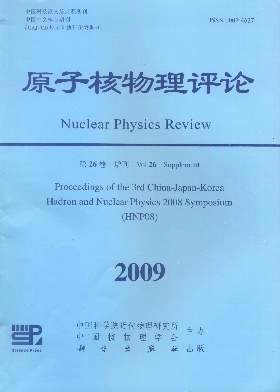Formation of Superheavy Nuclei in Massive Fusion Reactions
doi: 10.11804/NuclPhysRev.26.S1.168
- Received Date: 1900-01-01
- Rev Recd Date: 1900-01-01
- Publish Date: 2020-05-11
Abstract: Within the concept of the dinuclear system(DNS), by incorporating the coupling of the relative motion to the nucleon transfer process, a dynamical model is proposed for describing the formation of superheavy residue nucleus in massive fusion reactions, in which the capture of two heavy colliding nuclei, the formation of compound nucleus and the deexcitation process are calculated using empirical coupled channel model, solving master equation numerically and statistical theory, respectively. By using the DNS model, the evaporationresidue excitation functions in the 48Ca induced fusion reactions and in the cold fusion reactions are investigated systematically and compared with available experimental data. Optimal evaporation channels and combinations as well as the corresponding excitation energies are proposed. The possible factors that influencing the isotopic dependence of the production cross sections are analyzed. The formation of the superheavy nuclei based on the isotopes U with different projectiles are also investigated.
| Citation: | FENG Zhao-qing, JIN Gen-ming, LI Jun-qing, Scheid Werner. Formation of Superheavy Nuclei in Massive Fusion Reactions[J]. Nuclear Physics Review, 2009, 26(5): 168-168. doi: 10.11804/NuclPhysRev.26.S1.168 |






 甘公网安备 62010202000723号
甘公网安备 62010202000723号 DownLoad:
DownLoad: